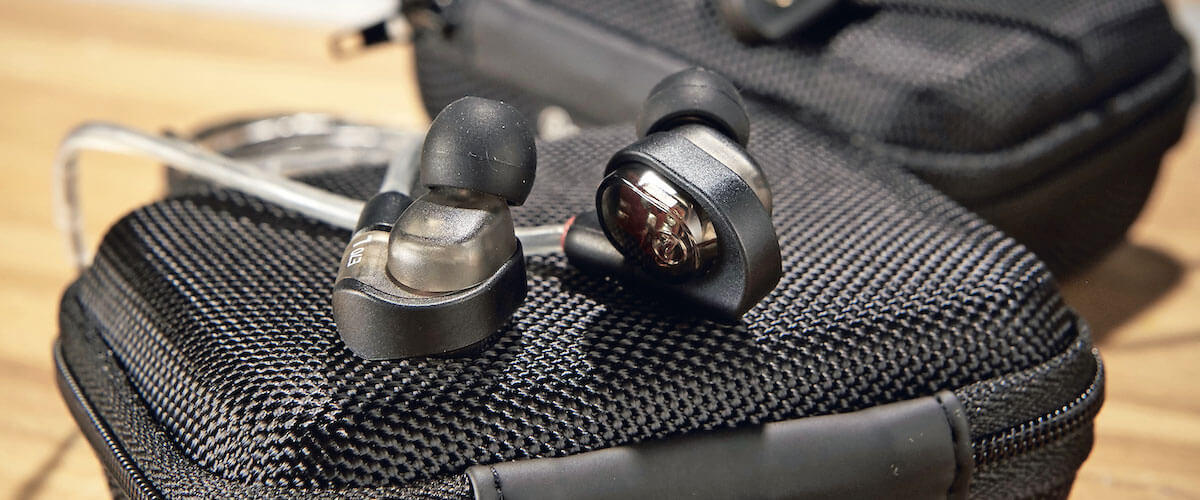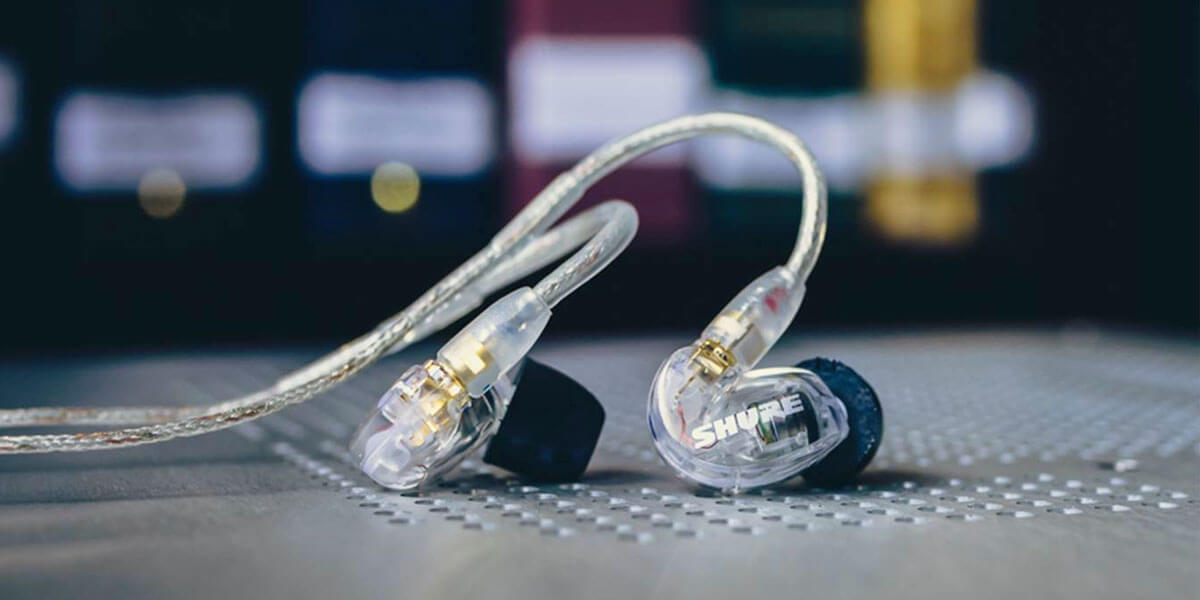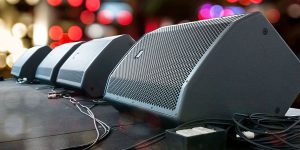Musicians, performers, and audio enthusiasts always strive to connect deeply with their craft. The IEM system is an innovative method that has transformed the way you engage with sound. This cutting-edge technology strengthens the connection between musicians and their work and, most importantly, raises their interaction to a whole new level.
will explain how in-ear monitors work in this article. You will learn about their structure, components, features, customization, and personalization options.
Understanding in-ear monitor system
An in-ear monitor system is a personalized audio monitoring solution for live performances and studio settings. It allows you to monitor audio directly in the ears and consists of several key components, including a transmitter, receiver, and individual in-ear monitors (IEMs).
By eliminating the need for stage monitors, which can be affected by environmental factors and produce inconsistent sound, IEM systems offer a consistent and personalized listening experience. Performers can control their audio mix, hearing every detail and nuance. Moreover, the isolation provided by the IEMs protects the performers’ hearing by reducing the need for excessively high stage volume.
Components of an in-ear monitor system

To better understand what an ear monitor system is, we will look at the components of this technology.
Transmitter
It receives an audio signal from an audio source, such as a mixing console or audio interface, to a dedicated output or bus and transmits it wirelessly to the IEM receiver. The IEM transmitter is connected to the audio source using an appropriate cable or connection, using balanced XLR or TRS cables, or digital, like Dante or AES/EBU. The audio signal may undergo some processing at the transmitter stage, such as equalization, compression, or limiting to achieve the desired sound. The transmitter converts the processed audio signal into a wireless format suitable for the IEM receiver. This is done using radio frequency (RF) transmission technology, such as UHF or digital wireless systems.
The transmitter ensures that the audio signal is free from interference or signal degradation. This requires high-quality transmission circuitry that maintains the integrity of the audio signal throughout the wireless transmission process.
The transmitter has regular and optional features to enhance its functionality and versatility:
- Frequency range and bandwidth. A wide frequency range and ample bandwidth allow compatibility with various audio sources and environments.
- Transmission power. It can cover the desired range without compromising signal quality or encountering interference.
- Antenna options. There are detachable or adjustable antennas to optimize signal reception and transmission.
- Output channels. The transmitter should provide multiple output channels to accommodate multiple performers or mix configurations.
- Monitor mix controls. There are built-in controls for adjusting individual monitor mix, providing flexibility and personalized monitoring experiences.
- Battery life and power options. Long battery life and the availability of alternative power options, such as AC power adapters or rechargeable batteries, ensure uninterrupted operation during performances or recording sessions.
- Signal encryption and security. Advanced transmitters may incorporate signal encryption and security features to prevent unauthorized access and ensure the privacy of the audio transmission.
- Rack mountable design. Rack-mountable transmitters allow for easy integration into existing audio setups and provide a tidy and organized installation.
Receiver
The IEM receiver needs to be paired or synchronized with the transmitter to ensure they are tuned to the same RF frequency or channel. It has an antenna that captures the RF signal transmitted by the IEM transmitter. The antenna converts the RF signal into electrical that can be processed by the receiver’s circuitry. The received RF signal is amplified to a suitable level for further processing. Once the demodulated audio signal is obtained, the receiver may apply various audio processing techniques to optimize the sound quality.
Various wireless transmission technologies are used in the system, including UHF and digital wireless. UHF systems operate in the radio frequency range of 300 MHz to 3 GHz and are commonly used in professional audio apps due to their reliable performance and resistance to interference.
Digital wireless systems encode the audio signal and transmit it digitally. This technology improves signal quality, reduces noise, and increases resistance to interference compared to analog systems.
The choice of technology impacts signal quality and latency, which refers to the fidelity and integrity of the audio signal, ensuring that it is accurately reproduced without distortion or artifacts.
In-ear monitors (IEMs)
They are typically connected to the IEM receiver using a cable, which typically has a dedicated output jack, such as a 1/8″ or 1/4″ headphone jack. For universal fit IEMs, the cable terminates in a standard headphone connector, such as a 1/8″ stereo plug. Custom-fit IEMs typically have detachable cables with connectors that match the IEM receiver’s output jack.
Some IEM systems offer wireless connectivity between the receiver and the IEMs, being equipped with wireless technology, such as Bluetooth or proprietary wireless protocols. The IEM receiver transmits the audio signal wirelessly to the IEMs, which receive and decode the signal for playback.
The driver technology within the IEMs is responsible for converting electrical audio signals into sound waves. High-quality drivers with a wide frequency response range and low distortion ensure faithful audio reproduction.
Crossovers are components within the IEMs that divide the audio signal into different frequency ranges and direct them to the appropriate drivers. They help achieve a balanced and cohesive sound by ensuring that each driver handles the frequencies it is suited for.
Well-designed cabinets can help block out external noise, improving isolation and allowing performers to focus on the audio. Additionally, ergonomic design elements such as lightweight materials, adjustable ear tips, and cable routing contribute to comfort during extended use.
IEMs, as the final stage of a sound delivery system, offer a highly controlled and customized monitoring experience, providing sound isolation, mobility, and hearing protection, contributing to improved performances and a more satisfying on-stage experience. Also, here you can read the difference between In-ear monitors and earbuds.
Customization and personalization

I think you have already guessed that on-stage IEM headphones adapted to the individual ear shape offer significant benefits to performers. This guarantees increased comfort, improved fit and sound quality.
The manufacturing process for custom IEMs typically involves the following steps:
- Taking an impression of the ear using a soft silicone material.
- Creating a 3D ear canal model as the basis for the custom IEM design.
- Crafting shell of acrylic or silicone for a perfect fit.
- Integrating drivers, crossovers, and cables to achieve optimal sound quality.
Custom musician in-ear monitors are used for unique needs, which ensure a comfortable experience during prolonged use and excellent noise isolation.
Using in-ear monitors in different settings
The benefits of in-ear headphones, including noise-canceling and hearing protection features, make them versatile tools in various environments, which I described below.
- Live performance. Ability to hear a customized audio mix directly in the ear, staying in sync with the band and monitoring own vocals or instrument.
- Studio recording. Help isolate the audio being recorded from the ambient sound in the studio, minimizing bleed between microphones.
- Broadcast. Providing a direct and controlled audio feed, allowing one to monitor own voice and the program content.
- Church services. Enhancing the audio experience for musicians, vocalists, and worship leaders.
- In-person listening. Its compact size, noise-canceling capabilities, and comfort make it ideal for use in noisy environments, such as public transportation, airplanes, or busy urban areas for personal use.
Overall, knowing what IEMs are and using them leads to personalized and immersive monitoring solutions, enhancing the clarity, control, and final quality of sound on stage. IEM systems offer the flexibility to adapt to different performance environments and accommodate the specific preferences of each artist.





